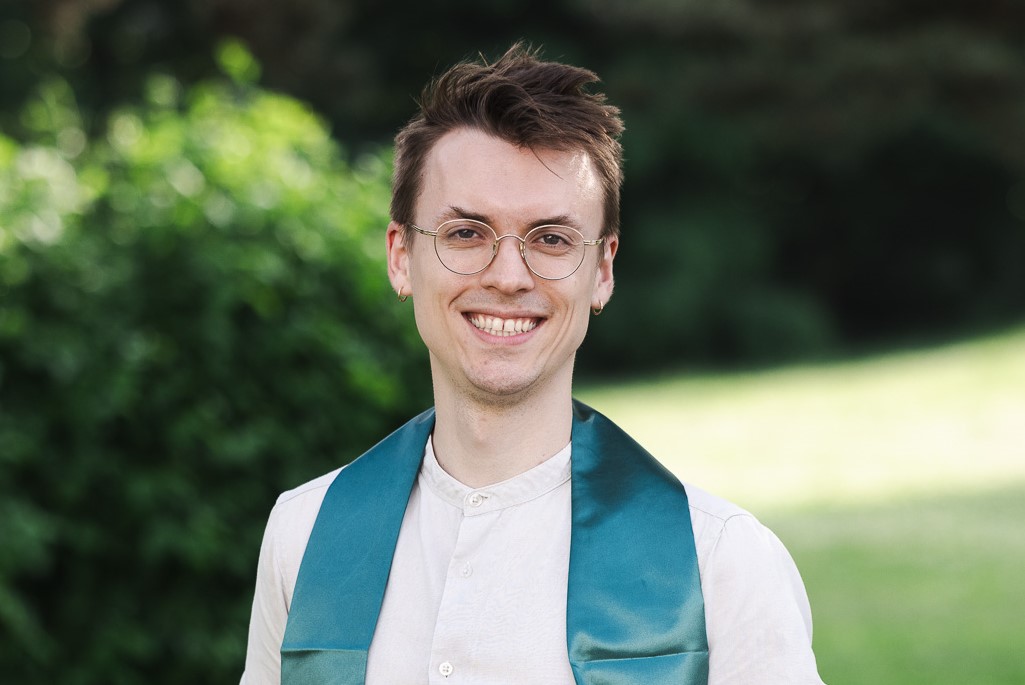
UNIVERSITY OF ZURICH, ZURICH, SWITZERLAND
Morris Brooks graduated from the ISTA Grad School in 2023. During his time at the Seiringer group, he studied quantum systems involving large numbers of particles and their collective behavior. In 2021, he was the lead author on a paper on a new way of creating anyons, strange quasi particles, using rotating molecules, possibly aiding efforts to constructing a new kind of quantum computer. He was awarded the Outstanding PhD Thesis Award for his work at ISTA. He has since moved to the University of Zurich to continue his academic career.
Watch the corresponding video on YouTube
My name is Morris Brooks. I do not have an up-to-date business card, but I would describe myself as a mathematician working in research.
When I finished high school, it was pretty clear that I wanted to have a career in academics. But at that time I didn’t know if I wanted to do mathematics or physics. I decided for mathematics, which I do not regret. But it was really at ISTA where I could finally unify my passion for those two subjects.
I do aspire a career in academia. Especially, I want to use the things which I’ve learned here at ISTA and propagate them further. I think I won’t be happy outside much.
It was here at the Institute where I figured out what kind of research I want to do, and I cannot overestimate the impact it had on my career.
For me, the most ordinary days here have been the most treasured memories. I go in the morning to the duck pond and take my breakfast and maybe go to lunch with the whole group afterward. And, you know, if I get stuck in my work in the afternoon, maybe I go for a walk in the hills of Klosterneuburg. I found that very relaxing.
I think I have two good advices. The first thing is: I think what sets ISTA apart from other institutes is the interdisciplinary aspect. It is really draining to work outside your own field or outside your comfort zone. But I think it is very rewarding. And the second thing is: When you get stuck in your work, I think you should just stop what you’re doing and go outside. The nature here is beautiful. You should really enjoy it.
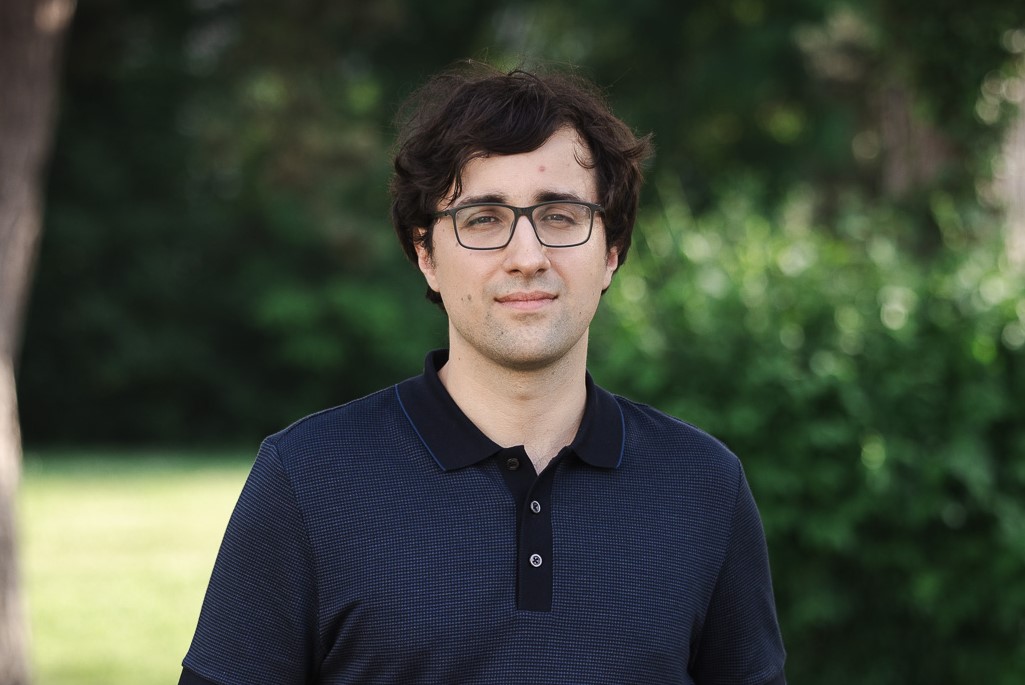
GOOGLE RESEARCH, ZURICH, SWITZERLAND
What the future can hold for excellent PhD students after graduating from ISTA can be seen by the example of Alexander Kolesnikov. During his PhD at ISTA, Kolesnikov focused on the design of computer systems that can automatically learn to parse and understand visual information, like images or videos.
He received his doctorate in 2018, is currently working at Google Research in Zurich, and has now received the 2022 ISTA Alumni Award, given to excellent former researchers of the Institute.
Watch the corresponding video on YouTube
My name is Alexander Kolsenikov. Actually, I don’t have a business card. But if I happen to make one, it will say: Computer Vision and Machine Learning Researcher at Google Deepmind.
It is actually very similar to the typical postdoc position. So, I happen to come up with some new research projects and then execute these projects together with my colleagues, submit the research to conferences, travel there, and I also happen to participate in internal projects inside Google as well.
I did my education in Moscow before coming here. I was mostly focused in applied mathematics and computer science. And when coming here, I decided to specialize in machine learning and computer vision.
ISTA played a very important role in my career. When I first came here, I had some fundamental education, but I didn’t have many research skills. Most of the research skills that I have now, I actually acquired them at IST Austria.
I have a lot of nice memories of doing sports together with my ISTA colleagues. I used to regularly play football, frisbee, do climbing, or even some competitive programming.
Maybe the first advice is to prioritize mental and physical health. Sometimes life in academia can be quite stressful and it’s very easy to get carried away and forget to take care of yourself. The second advice I would give is just to talk a lot with people around you, with your colleagues, and also with external collaborators. It can be very helpful in hard to predict ways. Maybe you get a new research idea or get unstuck. Or it may help you to find a new job after you decide for example to stop working in academia or finish your PhD. The third advice is to be very critical of the advices you get. I think everybody’s situation is very different, and no matter from who you hear the advice: be very critical and aware that it may not apply to your situation.
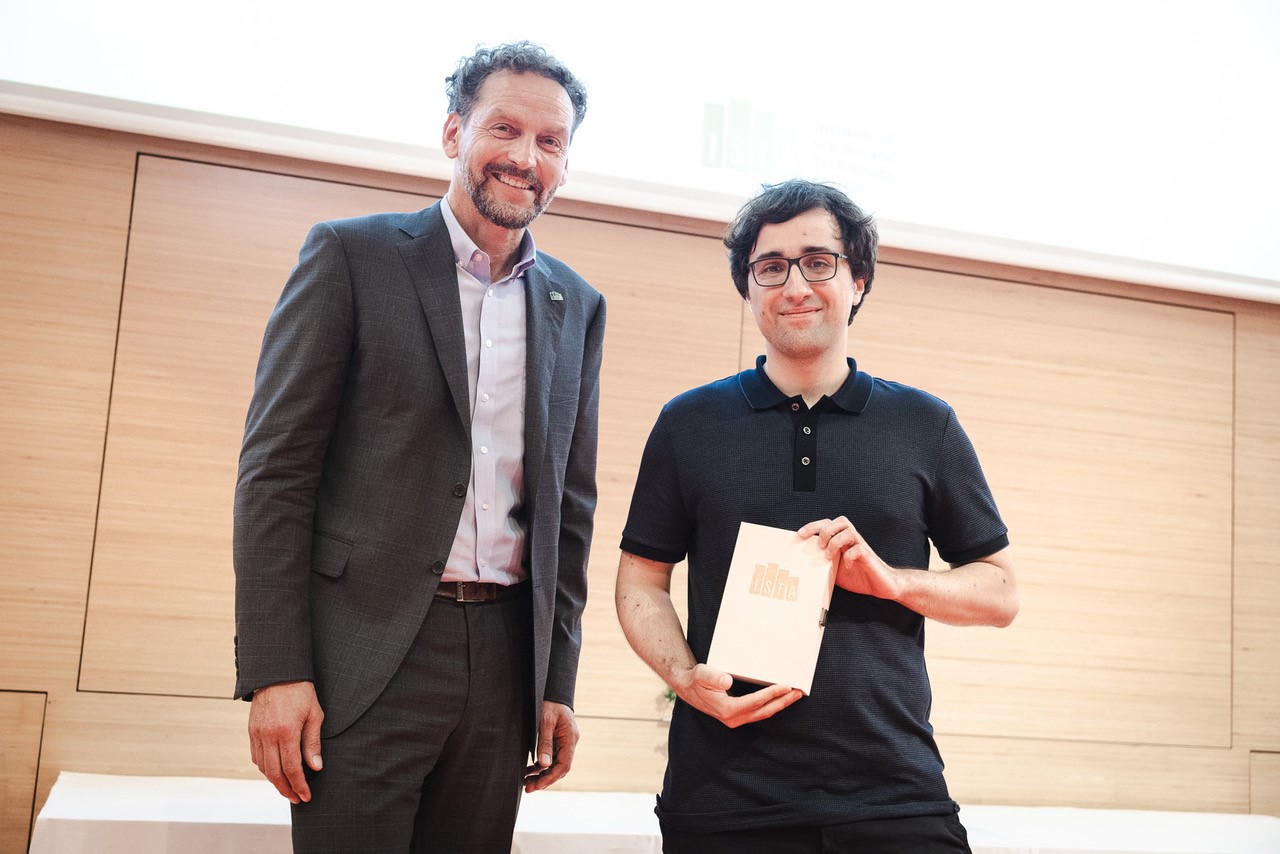
The ISTA Alumni Award 2023, given to excellent former ISTA researchers, was presented during the Graduation Ceremony of the ISTA Graduate School at the end of June. Awardee Alexander Kolesnikov is a great example of what the future can hold for excellent PhD students after graduating from ISTA: he received his doctorate in 2018, is currently working at Google Research in Zurich.
Already during his PhD, Kolesnikov focused on the design of computer systems that can automatically learn to parse and understand visual information, like images or videos. “The crux of my research lies in enhancing the efficiency with which computers learn to interpret visual data from examples,” Kolesnikov explains. What he has begun at ISTA’s Lampert group focusing on machine learning and computer vision, he is still pursuing at Google now—and that very successfully, as his former supervisor Christoph Lampert points out: “Not even five years after his PhD, Alexander has become a highly cited scholar in his field. He has made an astonishing number of influential contributions to computer vision, most notably the creation of machine learning algorithms, so called Vision Transformers. These have now become the foundation of most state-of-the-art computer vision models, both academic and well as commercial.”
This is one of the many reasons making Kolesnikov a worthy winner of the alumni award, which he received at the ceremony this Thursday. And the appreciation clearly is mutual. “I am deeply honored to receive the ISTA Alumni Award,” Kolesnikov said. “This recognition holds special significance for me, as ISTA has played a pivotal role in shaping me as a scientist.”
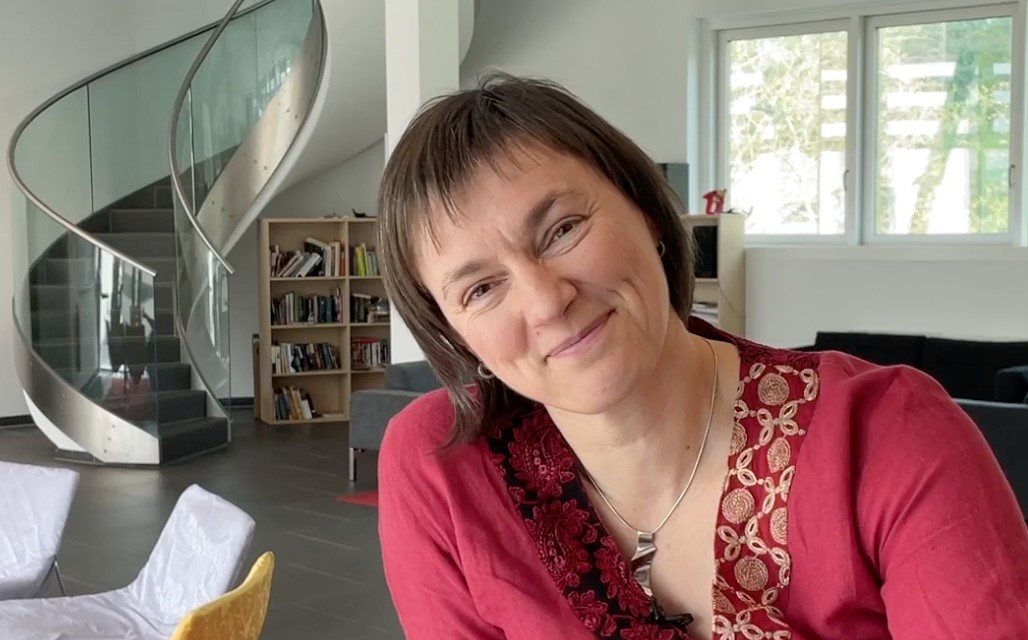
UNIVERSITY HOSPITAL BASEL, SWITZERLAND
Janina Kowalski was a Postdoc in the Jonas group. She now works as a neuroscientist, psychiatrist, general practitioner, and trauma-therapist in Basel, Switzerland. In April 2022 she visited the ISTA campus to take a walk down memory lane and answer some questions about her work and career.
Watch the corresponding video on YouTube
Well, I’m taking care of people, enabling them, helping them find themselves, to find a better way of living their lives, even if they have had serious troubles in the past.
Well I started off as an MD. Then I did a PhD in neuroscience and I was basically working on patch-clamp recordings in the brain. First, in Freiburg im Breisgau and then I moved with my postdoc lab to the ISTA.
I see myself in the future indeed continuing that work but going even more into experimental approaches and into research mostly focusing on trauma therapy.
Well I could dive deeper into basic science techniques and the thing I cherished the most here was the connection between different groups from different fields. Not only from neuroscience. That was very inspiring for me.
Well, the nights on the bridge during late focused research times. Chatting to other people from other labs. These were quite amazing.
Follow your ideals and your heart and your brain. Don’t pick only one. And talk about yourself, talk about troubles, look for other people, who might want to listen. And: Don’t let yourself get distracted by what the global opinion is. Do your thing. Stay true to yourself.
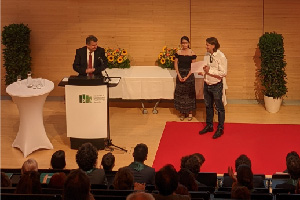
For the first time, ISTA presented an outstanding achievement award to an alumnus. The ISTA Alumni Award went to former ISTA postdoc Anton Mellit, an outstanding mathematician who, according to his former group leader Prof. Tamas Hausel, “works in four to five different areas of mathematics simultaneously and achieves extraordinary success.” The Ukrainian is currently an associate professor at the University of Vienna and has gained international attention for his work on knot theory, algebraic combinatorics, algebraic geometry, and number theory.
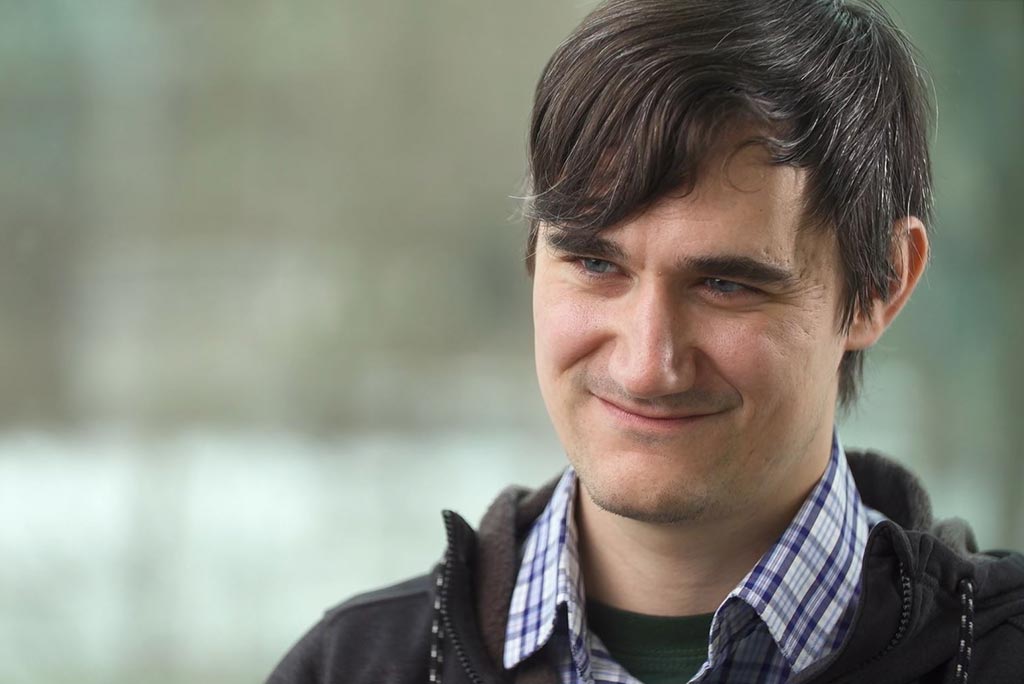
MAX PLANCK INSTITUTE FOR EVOLUTIONARY ANTHROPOLOGY, LEIPZIG, GERMANY
Harald Ringbauer was a PhD student in the Nick Barton group. He is now a group leader at the Max Planck Institute for Evolutionary Anthropology, Leipzig. In January 2021 he visited the IST Austria campus to take a walk down memory lane and answer some questions about his work and career.
Watch the corresponding video on YouTube
My business card right now says group leader at the Max Planck Institute for archaeogenetics in Leipzig, and I actually adjusted to get a new business card. Because up until now, I was doing a postdoc at Harvard, at the Harvard Medical School. I will actually keep my affiliation. So it will be a pretty cool business card.
I’m an archaeogeneticist, which means that we get DNA from human remains who lived 1000s of years ago. And then, we look at how people moved around, how they’re related, and their social structure. So we try to get insight into past movement into past mobility into past patterns, how we live together. The coolest thing is that you really get fascinating insights of people who lived like 1000s of years ago, and it’s still mind-boggling for me. For instance, Ötzi: We have his whole genome, and you can really see to whom he is related and how he came there. We can see from which group he was if his parents were related. So, the coolest thing about my job is that you really get fascinating new insights into who these past people were.
The limitations are that, when we look at the human past, this is often a very emotionally very loaded topic. So often, even when you don’t even think about it. When we only tell stories about past movements or stories about ancestry. People with certain agendas try to take these results and make an argument out of them. So you always have to be careful not to step on anyone’s toes, and also to present it in a very sensible way.
Totally in science. So normal will be for five years at the Max Planck Institute as a group leader. I hope to see myself in five years in Leipzig. And then beyond that: a career in science. Actually, long run, I like humans. They are very interesting for doing ancient DNA. But now we can also do ancient DNA on animals and dogs, on horses, and so on. So that would actually go full circle for the PhD doing genetic analysis, and I want to stay in that kind of topic.
In my bachelor’s and master’s, I did mathematics and physics at the University of Vienna, so actually very abstract. And then only at the IST, I came, I became more interested in actually population genetics, where you can actually apply these mathematical tools to population genetics, and then became more and more interested in actual data analysis. And so, in the US, I really dove deep into archaeogenetics. That’s actually a very interesting story. Because before I started, I was actually thinking: history or mathematics. Because actually, I had a big interest in human history. But I chose mathematics. And I would not have guessed that, actually, by choosing to study mathematics, I would end up with an academic position in archaeology and human history. And it’s really funny to see like this way of quantitative thinking and like this modeling is now actually very useful in really like figuring out, really old big archaeological questions about the human prehistory and also now about human history.
It was the first time I came into contact with world-class population genetics. I was really lucky to have my supervisor Nick Barton, who is like a world-renowned expert, and I really came into contact with bleeding-edge science, like meeting the experts in the field. I got really good training in that and a lot of expertise. Up until now, I think this is the skill set and the network. I think that it is absolutely the key to my career.
The first piece of advice is: Don’t listen to advice. Go your own way. It’s like sciences. There are many aspects. It’s different for anyone, like it’s different per field it is different per character. There are actually many paths to success, and everyone has to find their own way, tailored to their own strength.
But then the second one, you should actually listen to that one: hard work and patience. It’s often not easy in science. You have to keep going. Everyone has good and bad days. It’s totally normal to have bad days, but persistence is important.
The third one is: don’t forget to have fun. You have to find a good balance. It was really good to play table soccer and getting everything out of the system. Most of us are not robots, and most of us, you know, work best when we have a good balance.
Great moments were certainly coming to the bridge after lunch and seeing everyone, my cohort, my international group of friends, having fun on the bridge having fun talking. So many fun moments: Playing table soccer, going to the sauna! All our retreats! Just sitting outside on the balcony. Coming back here to IST, it’s actually all coming back to me. Actually, I am thinking of doing another PhD at IST. 😉

GENENTECH, USA
Christine Moussion was a Postdoc at IST Austria. She now works as a group leader for Genentech in Califonia. At IST Austria Christine Moussion was in Michael Sixt’s group.
In an interview with Daniela Klammer and Kathrin Pauser which took place during the Science and Industry Day 2018 she answered some interesting questions about her work and how her career developed.
Watch the corresponding video on YouTube
On my business card is my first name and my last name, my position: I am a scientist in cancer immunology at Genentech in San Francisco, my address and my phone number. 😉
I lead a research team in a big pharma company I work in basic science and in the same time I lead 3 to 4 people in the basic science and at the same time I do some drug discovery at the same time. I think the coolest thing about my job is it is all about science. Basic science or applied science so to develop new treatment and also that there is no limitation. So we can do whatever we want in term of support facilities money so I think it is really to have great science and great support.
In the future I think I will go where the science will bring me. All I have worked for now is where I am happy to work on and I hope I can contribute to the development of new treatment for disease and at the same time make great basic science discoveries. And have fun in science.
I trained as a bioengineer in biotechnology and I worked for a short time in a start up in drug development. Then I came back to university because I decided to step back and to learn a new field which was immunology which I got very passionate about. So I did a PhD in immunology and a postdoc at IST Austria in Michael Sixt’s lab. I worked at the migration of leucocytes and developed a new bio imaging technic and assets that I can now apply in my current job. So I looked at immune cells recruitment in tumor and how to stimulate the recruitment of this leucocytes to improve cancer immune therapy.
IST Austria gave me the freedom to explore science the edges of science of my field like working at the interfaces between immunology and bio imaging for example. The platform of bioimaging is amazing and is always stimulating the progress, the development of new techniques. My mentor played the biggest role. He gave me freedom and he gave me support in terms of looking for jobs by connecting with his network and confidence.
IST was my first international experience. So I learned English here because I came from France. So now that I am living in the US the Americans say that I am speaking with a German accent. I am not sure about that I think I still have a strong French accent. Here I connected with a different type of culture and a different kind of science, really multidisciplinary, so I connected with Mathematicians or physicists and that’s what I liked at IST.
If I rely on my experience I would say: follow the science. See where the science will bring you. But take action you are the actor of your career. You have to make decisions if you need to step back if you need to change direction. You have to keep being proactive. Work hard surely for papers. Papers can get you everywhere. Go to conferences, connect to the leaders in your field to see where your field is moving and it’s also easier if you want to work in industry if you already know people working there. So if people know you and they know your way of thinking and the science you want to develop it is easier to get in later on. Chose a good mentor, a supportive mentor is crucial for a great future job.
I have two probably. When I was living in the guest house and also later I was able to cook French recipes and I was able to share French food with my colleges and I could learn recipes from different cuisine like Indian and I loved that a lot. And I also loved the postdoc retreat when we were going to the mountain for skiing. I think that were the two moments where I connected and I made really good friends, really strong connections. So that is probably my favorite moment at IST.
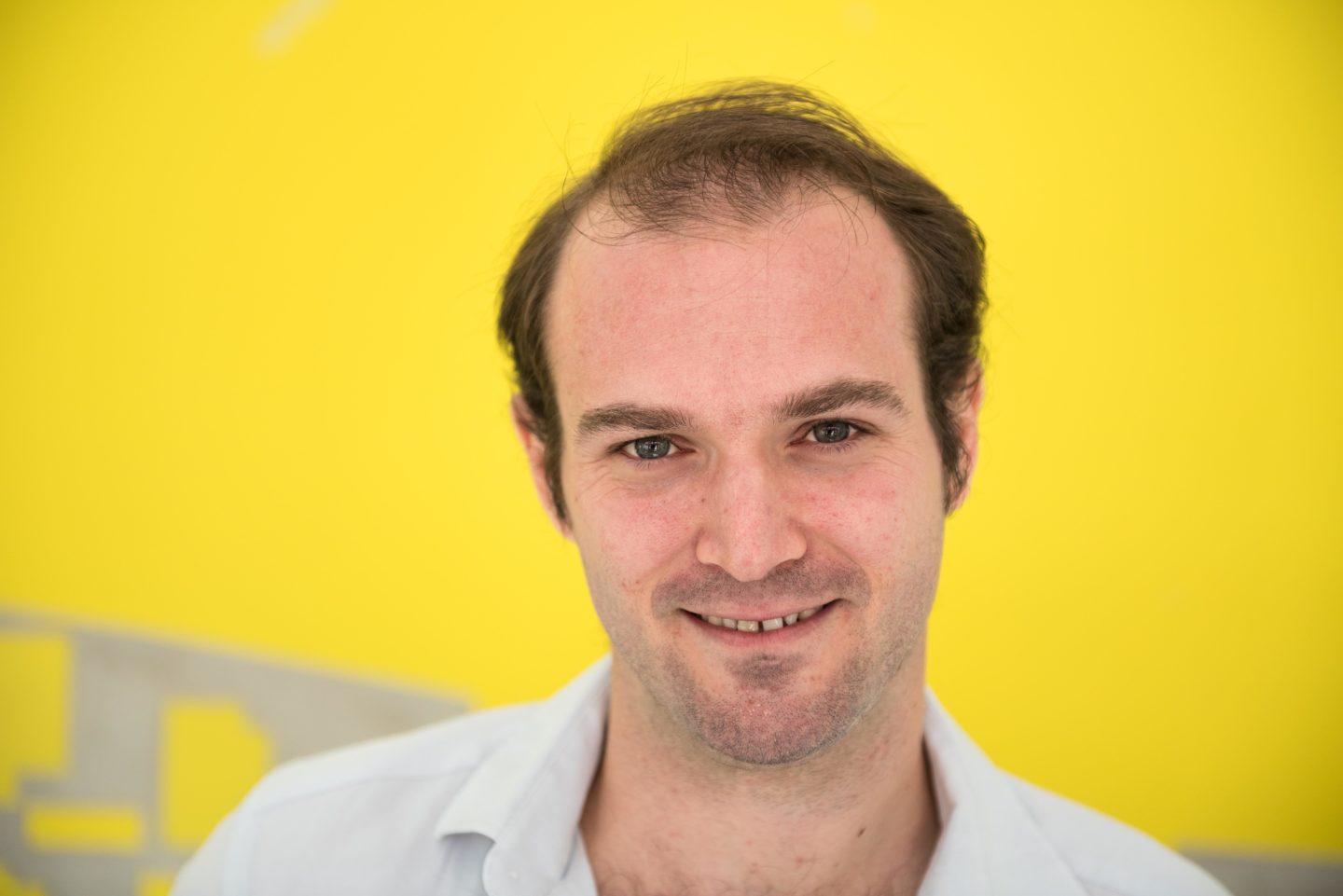
MAX PLANCK INSTITUTE FOR INTELLIGENT SYSTEMS, TÜBINGEN, GERMANY
Michal Rolinek was a PhD student at IST Austria. He now works as a postdoc at the Max Plank Institute for Intelligent Systems. At IST Austria Michal Rolinek was in the Kolmogorv Group.
He returned to campus as a speaker at the Science Industry Day 2018 and found the time to give an interview and answer some interesting questions about his work.
Watch the corresponding video on YouTube
I don’t have a business card but if I had one it would say that I am a postdoc at the Max Plank Institute for intelligent systems.
In our group, we are trying to connect new methods for artificial intelligence and to connect it with the world of robotics. And the coolest thing is that we have a whole floor of robots.
I don’t have a particular plan right now. Luckily we live in the days where there are amazing opportunities for computer scientists so I will just wait and see where they take me.
I got my master’s degree in Prague in mathematical analysis and here at IST, I got my PhD in theoretical computer science.
IST played a massive role for my career. I am really happy to say that the opportunities that I have right now are nothing I was imagining three or five years ago and if you told me I would not have believed it.
One, learn as much as you can about as much as you can. I think that IST is a great place for learning no matter which position you are holding here.
Two, be compassionate the academic environment can be very pressurizing and stressful and the sources of stress can be often different for different people so it is hard to relate. Care for the wellbeing of your coworkers and they will do the same for you.
Three, do it for the joy. I think that joy is the best motivation to do science or to do anything really.
I have had so many great memories. I had a great time in our office and playing football great time at retreats. But if I were to pick one it was the few boxing matches I had in the lecture hall.

MY RESEARCH LIES AT THE INTERFACE OF COMPUTER AND BIOMEDICAL SCIENCES AND FOCUSES ON THE STOCHASTIC PROCESSES UNDERLYING EVOLUTION. I DEVELOP COMPUTATIONAL METHODS TO LEARN FROM LARGE-SCALE BIOLOGICAL DATA SETS AND BUILD MATHEMATICAL MODELS TO EXPLAIN OBSERVATIONS ON A MECHANISTIC FASHION.
MOST RECENTLY, I FOCUSED ON INFERRING THE EVOLUTION AND THE SEEDING OF METASTASES IN PANCREATIC CANCERS.
Johannes Reiter returned to campus in Fall 2018 to give a special Think and Drink and to share his research with the current campus community. He also found time to do a video interview with us.
Watch the corresponding video on YouTube
I don’t really have a business card but if I had one it would say Johannes Reiter instructor at the Canary Center for Cancer Early Detection at Stanford University School of Medicine.
The coolest thing is that I can work on a globally really important disease. I work on tumors and specifically tumor evolution. I try to approach this problem from a mathematical perspective I try to come up with a quantitative framework that can describe the evolution of cancer.
In the future, I still want to be at the interface of multiple fields like computer science, biology and medicine. I also want to do research in academia perhaps also together at a medical school or a hospital and work together with various researchers from these various disciplines.
My background is in computer science, originally I actually did computer engineering. Then I did computer science at the Technical University in Vienna. When I came to IST I wanted to stay in computer science but I kind of got into theoretical biology and towards the end, I got more into cancer evolution and combining data analysis and mathematical modeling.
IST played a really important role in my career because before I started here I saw myself as an engineer and not as much as a scientist. But then when I started my PhD here I got introduced into so many different areas and I got interested in areas outside of computer science and outside of computer engineering. And that is also the most interesting thing about my job currently. That I can work with experts from various different fields and that keeps my job interesting.
My advice would be: think critically and deeply, try to become independent and ask your own questions, very early on in your career. And perhaps do an internship in industry so you have a good comparison between research that is happening in academia and research that is happening outside of academia.
My favorite memory of IST are definitely all the table soccer games which we played for a lot of time basically every day after lunch.
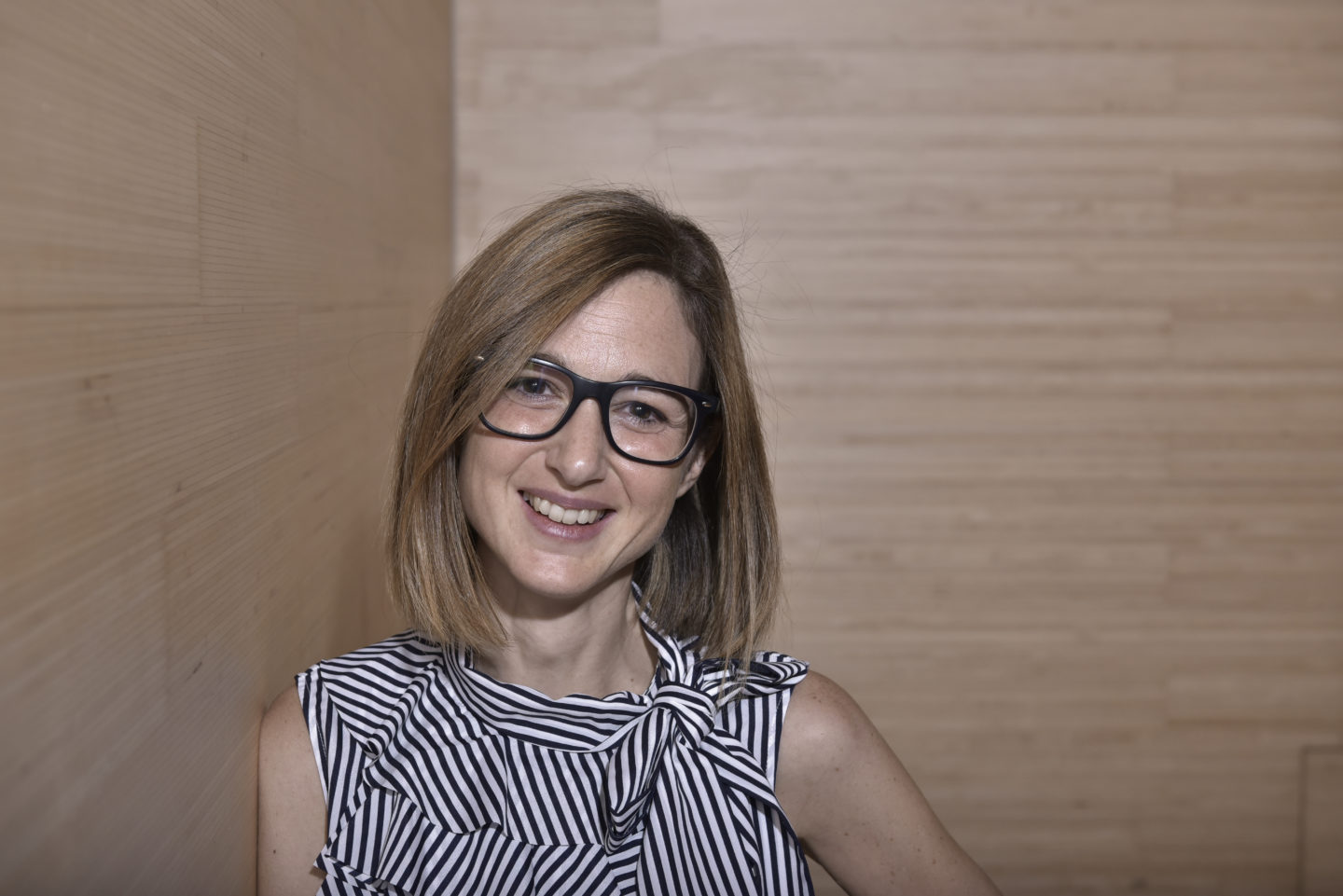
Inma Sanchez Romero was a Postdoc at IST Austria. She now works for the research Services of the University of Vienna, as an Assistant Project Manager of the INDICAR (Inter Disciplinary Cancer Research) Postdoctoral Fellowship Programme of the University of Vienna and the Technology Transfer Office. At IST Austria Inma Sanchez Romero was in Harald Janovjak’s group.
In an interview with Daniela Klammer and Kathrin Pauser which took place during the Science and Industry Day 2017 she answered some interesting questions about her work and her decision to switch from a scientific career to supporting science in a different way.
I work in research project management at the University of Vienna. Specifically, I work for a postdoctoral fellowship program called INDICAR (INterDIsciplinary CAncer Research), which is co-funded by the EU Framework Programme 7 (FP7) Marie Curie Actions.
So, on my business card it’s written my name, Ing. Inmaculada Sanchez Romero, PhD, and my position, INDICAR Assistant project manager.
My job is to support the INDICAR program and its fellows by looking for funding opportunities, writing and submitting proposals, and organizing outreach activities to disseminate information about our program and our fellows’ research. For example, I organize workshops to develop and strengthen our fellows’ skills.
There are two things that I really like about my job. One of them is organizing workshops and scientific events. And the second is that I like to think that I can have a positive impact on our fellows’ careers by looking for funding opportunities for them or by contributing to their professional development, by organizing workshops and outreach activities.
I think there are only a few positions in research project management. Once the transition is made, your professional profile becomes very specific. That might be a problem when looking for a position in another country or at another company.
I see myself working in research project management in an academic environment managing a research program and supporting its fellows.
I studied chemical engineering at the University of Granada in Spain, where I also did my masters in biotechnology. Then I obtained my PHD in chemistry working on protein engineering at the University of Granada in collaboration with Columbia University in New York, where I had three short-term research visits, and the Danish biotech company Novozymes Then later I did my postdoc at IST Austria working in synthetic biology in the Janovjak lab.
Besides all the support in scientific research at IST, I had the opportunity to collaborate and plan and organize scientific events. As a result, I explored and developed my organizational and management skills. That made me realize that I wanted to focus my career in that direction.
Work on your career development to obtain a good-sized set of transferable skills, not only by participating in workshops, but also by getting experience through volunteering, for example by organizing scientific events. Here at IST Austria there are a lot of opportunities for that.
The second one is to network, to attend conferences and workshops, to talk to people and create a solid network of contacts.
The third one is for people who are considering leaving academia. I would like them to know that they shouldn’t be afraid of the unknown. That leaving academia doesn’t mean that they have failed. It just means that they have other interests. It takes a lot of courage to follow your dreams and leave your comfort zone and to be willing to explore other possibilities.
One of my favorite moments at IST Austria was at the Young Scientists’ Symposium. I was part of the organizing committee. After all the work and all the effort organizing, it was amazing to see that it was something real. That it was happening and everything was working perfectly. The speakers and the attendees were really satisfied with the event. It was a rewarding moment and an amazing experience.